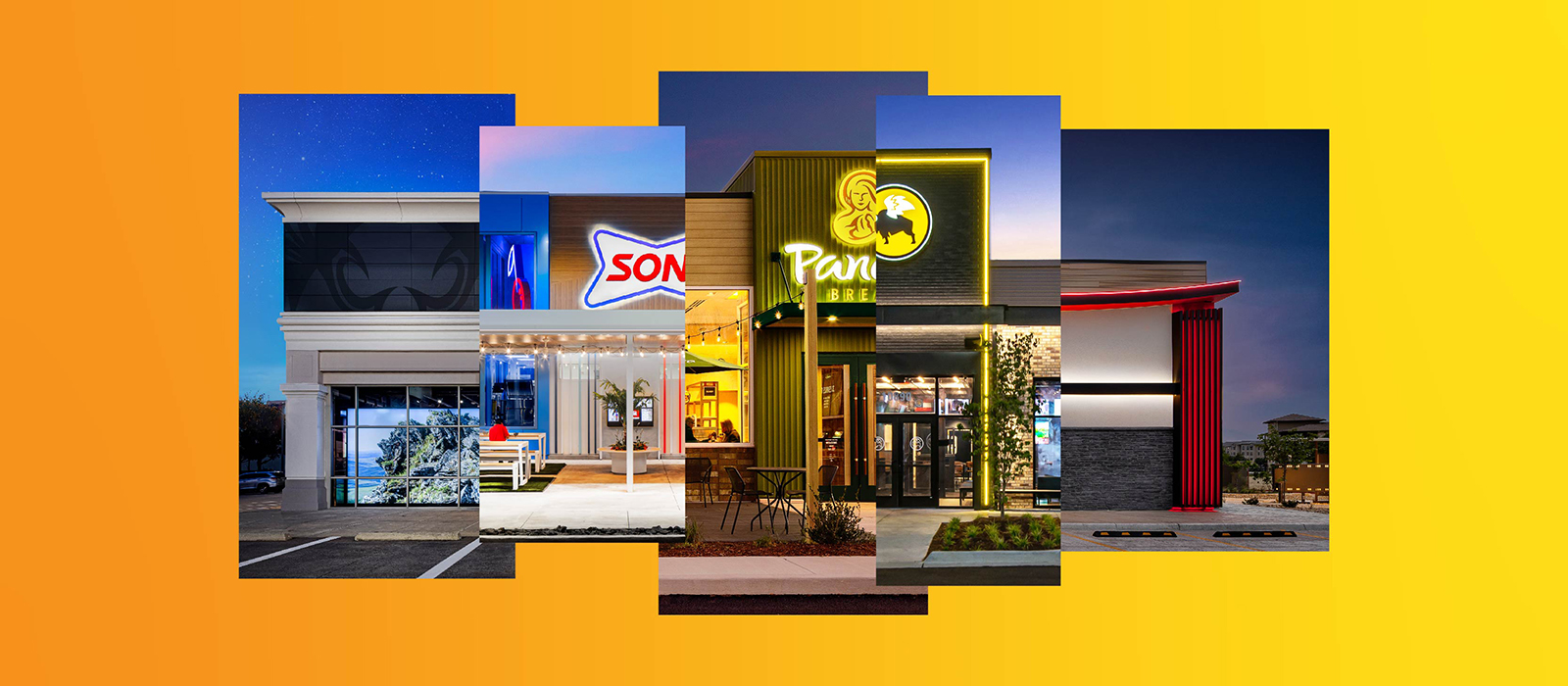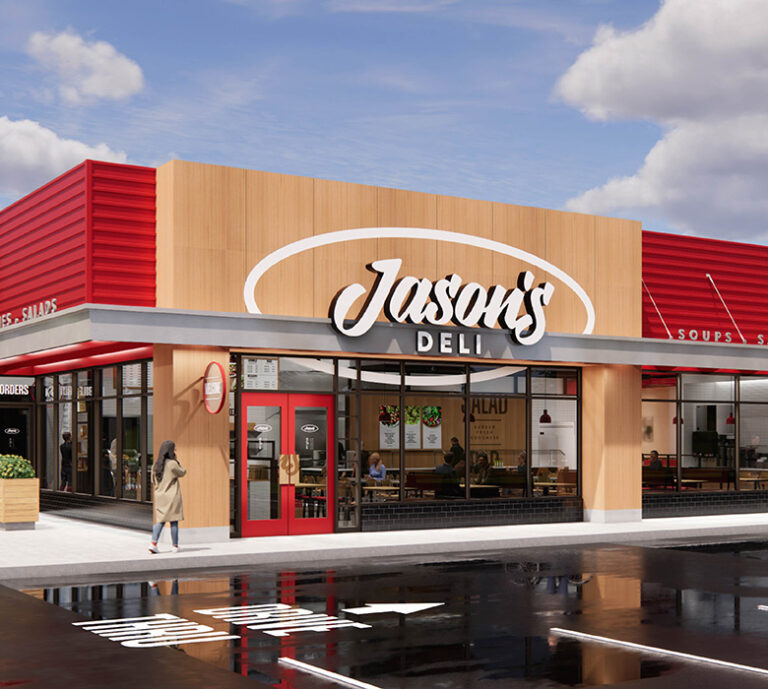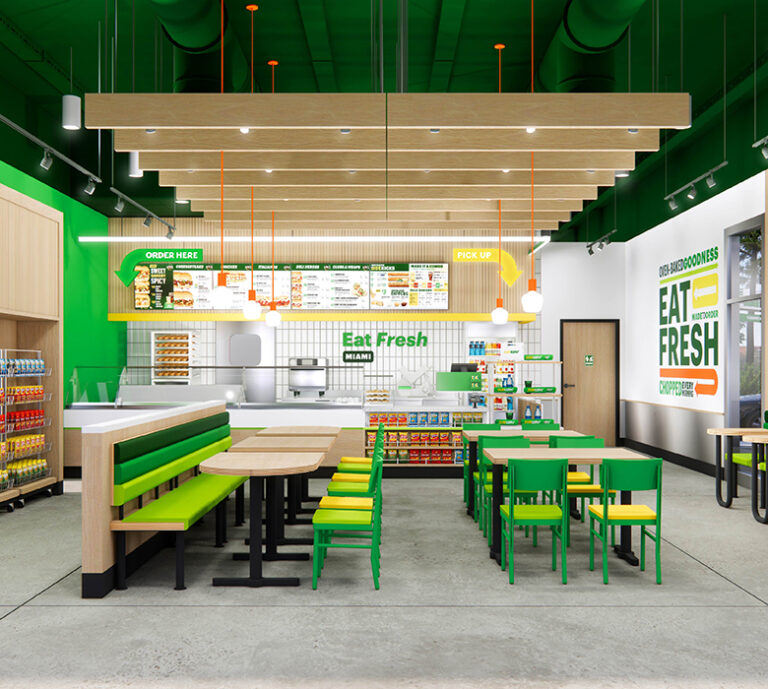×

See our latest work with Zaxbys, elevating their brand with a new look and environment that maintains their Southern heritage and hospitality.

As competition for real estate heats up and the hottest markets become fully saturated, we’re seeing an uptick in parent brands swallowing up and re-packaging singular standalone concepts. This trend towards combining multiple brands under one roof has become a way to get multiple brands into the market effectively. The “multi-brand” is a quizzical anomaly that continues to show up in retail and restaurants across the full spectrum of QSR to casual dine categories. Look no further than the Cinnabon Swirl concept or Applebee’s and IHOP’s consideration of a joint restaurant concept.
Historically, dual brand concepts provide an efficient business solution that seeks to drive investment through co-location and operational efficiency of back of house operations and labor. They provide a win-win for the parent brand and franchisees. But is it even possible to pull off a multi-brand experience without creating confusion and watering down established brand equity in the eyes of customers?
We believe that multi-brands can be done if they must be done. From a design standpoint, these co-branded destinations are rarely done as effectively as they could be. It is mission critical that existing single brand concepts are well established in the market, have an iconic image (and offer), and provide a strong baseline experience. Without that, brands can’t offset the inevitable fragmentation that a dual brand can and will create. Multi-brand concepts should serve as a strategic complement within the fleet and not be the only way into a market.
It’s a challenge combining singular brands, as each already has their own assets, colors, & attributes under one roof. Just throwing them all together and expecting it to feel cohesive doesn’t work. Creating new expressions that sample and reinterpret a brand’s iconic assets together also falls short. Mashups rarely move beyond novelty and get tiresome over time.
So how can brands ensure an effective multi-brand concept? They must be willing to sacrifice some of each brand in favor of a unified experience; One that can stand on its own and strategically integrate each of the featured brands. This can be done by keeping the customer mindset as the strategic driver, while empowering each brand with a license to deviate from their typical design language to express in a new shared aesthetic. Design considerations that prioritize simplifying the guest journey, and giving the brands permission to break free from the operational status quo, go a long way towards crafting a relevant multi-brand expression. There are tactics that brands might use to express within a shared experience, including: a neutral order or pickup point, presenting the offer with a shared menu board, and making room for each branded signature to thread within the dining room. These can provide a foundational place to start to ensure the combined look supports the overall guest journey.
Without a foundational strategy, brands will struggle to find a unified voice. Here’s our topline approach and process that outlines how businesses might start thinking about creating a multi-brand expression:
If done right, the new multi-brand will strategically restrain each of the singular brand expressions to define a new built signature experience; A concept that presents the combined offer with clarity and impact while still providing a vehicle that uplifts each brand and their collective offer.


